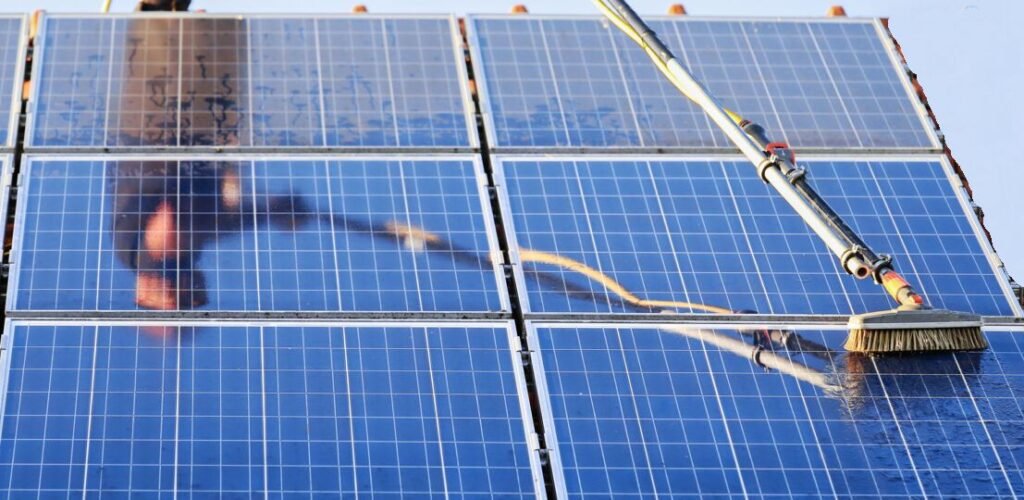Researchers in North Carolina have found that rainfall is not sufficient to remove pollen from solar panels, even though it can wash away other substances.
A study conducted by the National Renewable Energy Laboratory (NREL) showed that the presence of pollen on solar panels during springtime negatively impacted their performance. Although rain helped to remove some of the pollen, it was not enough to restore the panels to their original efficiency.
The issue of soiling, which happens when dust, pollen, or other substances block sunlight from reaching solar panels, is a significant problem for solar plant operators. The extent of the problem varies depending on local conditions and climate. Previous studies have looked at soiling losses in dry areas but have not considered rainier locations where pollen is a concern.
Contrary to what is commonly believed, frequent rainfall does not prevent solar panels from getting dirty. In fact, a study found that during the peak pollen season, the performance of solar panels can decrease by up to 15%, with the majority of the pollen coming from cypress, juniper, pine, and oak trees.
The data also indicate that without regular cleaning, solar panels can experience production losses of around 10% annually.
The solar plants which were considered for the study had been running for over seven years without any manual cleaning. Solar Unsoiled and the system owner found that using a mechanical wet brush to clean the solar panels increased performance by 5% to 11%.
The researchers were surprised to find that soiling losses on solar panels were higher than expected, even though there was frequent rainfall. Even after the pollen season was over, the panels did not return to their previous clean state.
This study suggests that regions with frequent rainfall should be cautious of soiling potential and may need to clean their solar panels to prevent financial losses and reduced performance. The researchers plan to conduct further studies on the effects of pollen and bio-soiling in the southeastern United States.
Reference- IEEE Journal of Photovoltaics, U.S. Department of Energy’s National Renewable Energy Laboratory (NREL) study, Clean Technica, Renewable Watch, PV Magazine
